Green New Deal Picks Up 2 Major Union Endorsements As Labor Support Grows
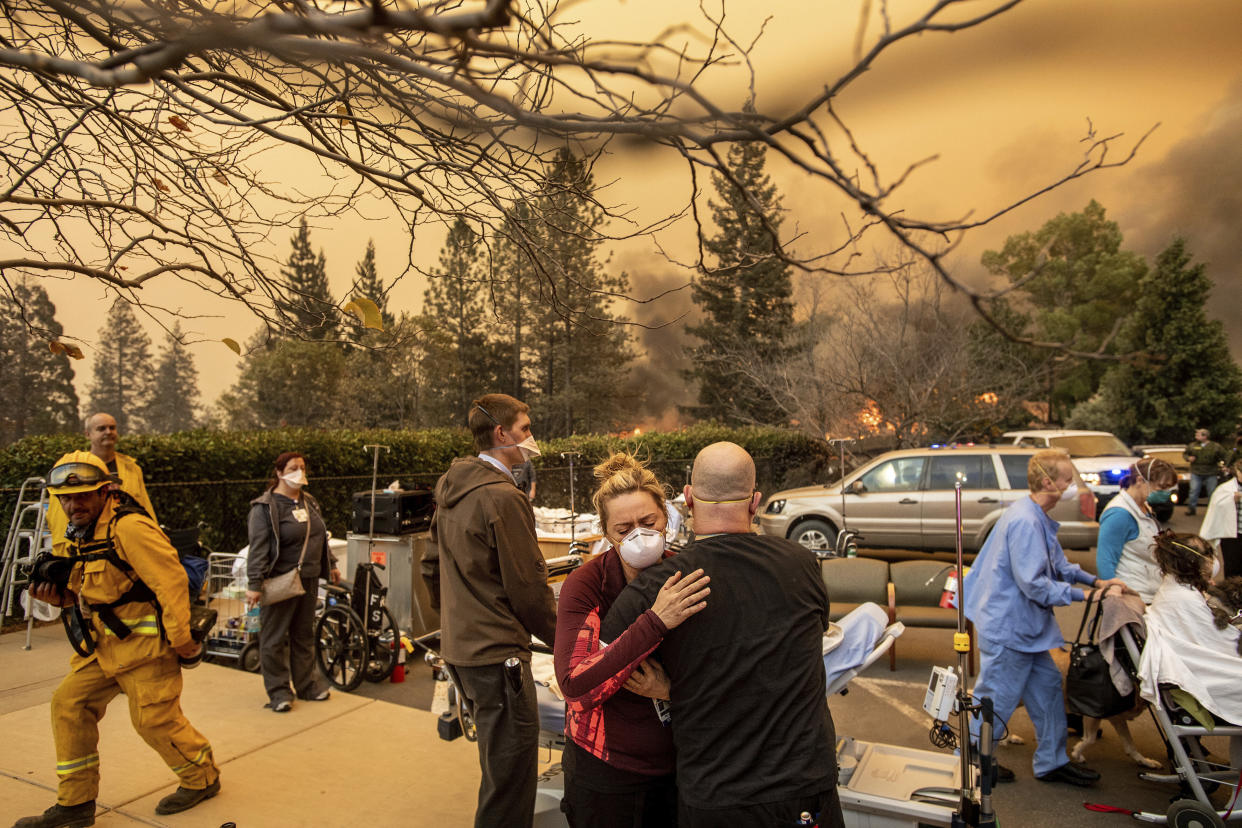
The Green New Deal picked up its second major union endorsement this week, highlighting growing support from labor leaders just as a new poll shows a majority of union workers back the movement.
On Thursday, the Service Employees International Union’s executive board voted to approve a resolution backing the GND, declaring itself the first national union to do so. That follows a similar endorsement by the Association of Flight Attendants, which is part of the Communications Workers of America union.
Unions may seem like a shoo-in constituency for a policy that, in its early present form, calls for a job guarantee, promises millions of “high-quality union jobs” and condemns “antilabor policies.” Even so, the endorsements marked significant victories for the Green New Deal movement, which faces fierce opposition from powerful wings of labor.
The influential construction unions, historically opposed to any policies that jeopardize fossil fuel infrastructure, have come out hard against the Green New Deal. The AFL-CIO criticized the plan to zero out emissions by 2030 as “not achievable or realistic.” Unions in California protested the GND at a state Democratic Party convention last week in San Francisco, offering a glimpse at how the proposal could prove electorally divisive even in blue states.
The political splits within labor, however, belie the findings of a new poll that found more than half of union workers in the United States back the movement for a national industrial policy aimed at keeping global warming from reaching catastrophic levels.
New survey data from the left-leaning think tank Data for Progress show 52% of current union members backing the GND, compared to 22% opposed, 21% who didn’t know and 5% who felt neutral. For respondents who live with at least one active union member, an even divide emerged, with 27% in support and 27% in opposition to the GND, another 30% unsure and 17% neutral.
“This is a big shift. We have to have a big conversation here,” Sara Nelson, president of the Association of Flight Attendants, told HuffPost on Friday. “It’s a representation of the momentum that’s growing around the Green New Deal.”
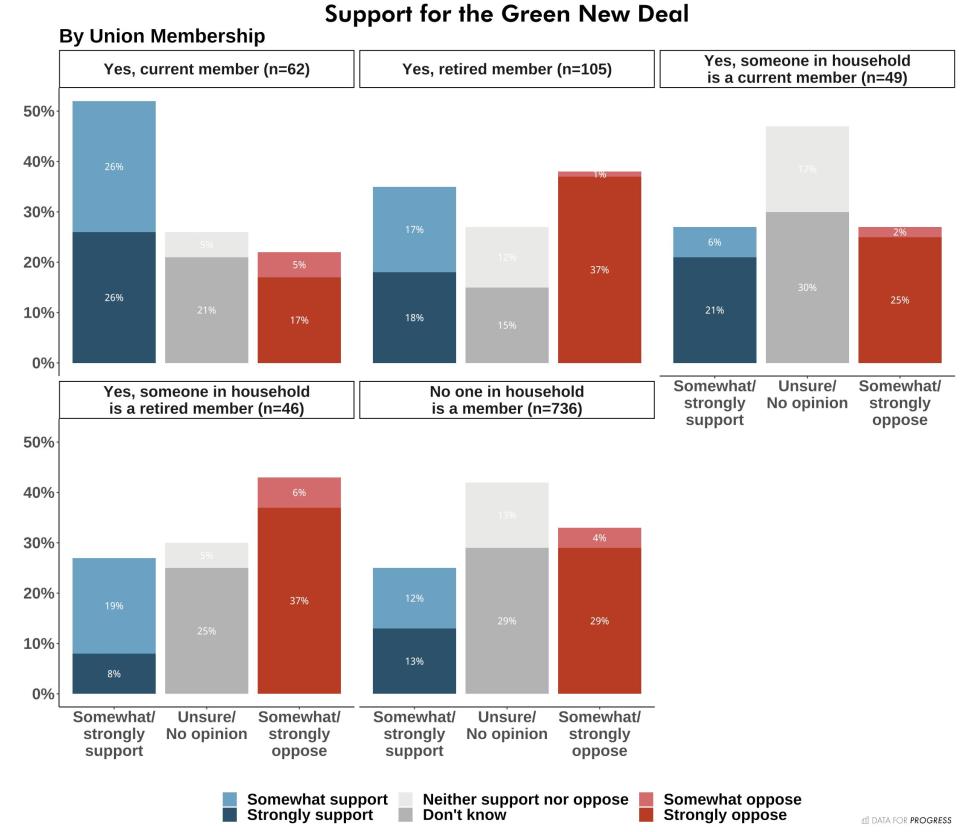
Support dropped off in households with retired members or no union workers at all, according to the national survey, taken online between March 30 and April 7. Among retired union workers, opponents of the Green New Deal edged out supporters 38% to 35%, with 15% unsure and 12% neutral. For those living with a retired union member, opposition surged to 43%, with just 27% in favor, 25% who didn’t know and 5% with no opinion either way. Thirty-three percent of respondents without any ties to a union opposed the GND, while just 25% supported it, 29% said they were not sure and 13% were neutral.
That opposition appears to demonstrate the effects of a right-wing campaign that has for months smeared the GND by claiming it would ban hamburgers, eliminate private car ownership and, perhaps most outlandishly, result in a genocide against white men. In a widely cited poll from December, Yale and George Mason universities pegged support for the GND’s policies at 81% of registered voters, including 64% of Republicans and 57% of self-declared conservative Republicans.
So where does that leave the Green New Deal?
As it stands, the GND exists only as a nonbinding joint resolution that stakes out the key tenets of what future legislation should cover, including guaranteed union jobs to millions of Americans, an effort to scale back emissions as much as possible by 2030, and a seat at the table for communities most dependent on, or victimized by, the fossil fuel industry. Full-blown legislation isn’t expected until next year.
In the meantime, Democratic presidential candidates are competing over climate plans that approach the economy-wide mobilization for which the Green New Deal calls. The $9 trillion plan released in May by Washington Gov. Jay Inslee ― whose entire White House campaign is centered on climate change ― includes a detailed proposal to repeal right-to-work laws and rejuvenate the labor movement. Rep. Alexandria Ocasio-Cortez (D-N.Y.), the face of the GND movement, called Inslee’s plan the “gold standard” for climate policy.
But that uncertainty over policy has done little to win over unions whose workers rely on pipeline building and coal train jobs that, as it stands, pay much higher wages and use significantly more union labor than anything in solar or wind.
In February, Terry O’Sullivan, general president of the construction trade Laborers’ International Union of North America, called the GND “a bad deal” that “threatens to destroy workers’ livelihoods, increase divisions and inequality, and undermine the very goals it seeks to reach.” In an April speech, AFL-CIO President Richard Trumka complained that the union wasn’t “part of the process” and said he’d “want a whole bunch of changes made so that workers and our jobs are protected in the process.”
SEIU tends to represent public employees and service and health care workers, many of them people of color. On the whole, this kind of union is more likely to back the GND than, say, a union representing mostly white construction workers. The Data for Progress survey did not break down support by union sector.
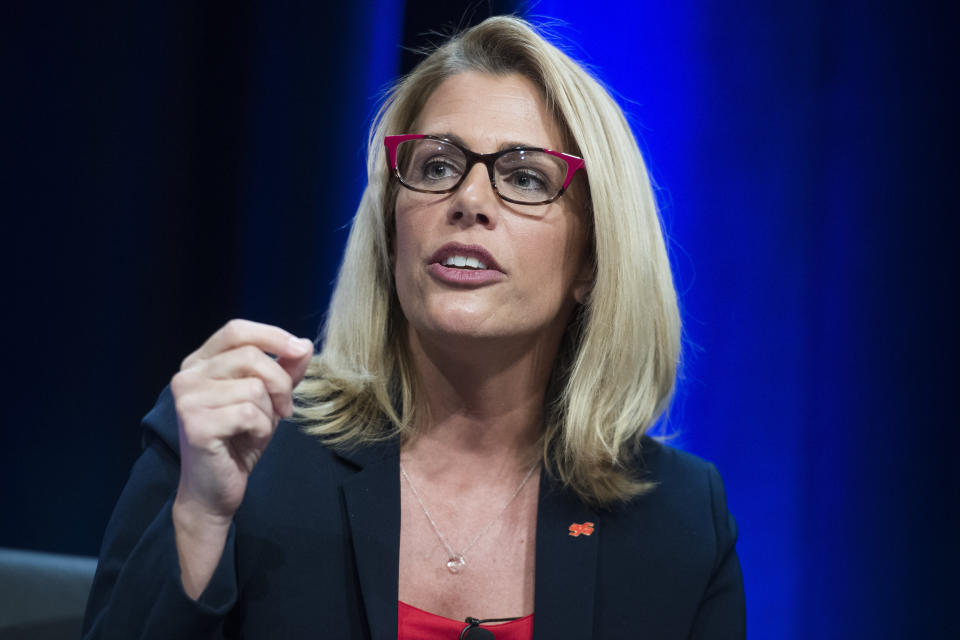
But the SEIU endorsement bolsters an argument made by Green New Deal proponents, that the policy’s advocates need to look beyond renewable energy and reframe the concept of low-carbon jobs to include health care, teaching and other service work.
Just six months after the Green New Deal entered the national lexicon, the labor support the movement has cultivated remains devoted. Members of 32BJ, an SEIU shop and the nation’s largest union for property services workers with 163,000 members, serve as regular speakers at Green New Deal rallies. The Maine AFL-CIO became the first statewide federation to endorse the movement, then marshaled its resources to back Green New Deal legislation in the Pine Tree State.
Nelson ― whose efforts to end the longest federal government shutdown in history made her what The New Republic called “the most powerful labor leader in the country ― threw her weight behind the Green New Deal, convincingly arguing that unabated climate change poses a far greater risk to airline industry jobs than regulations to curb emissions.
The next step, Nelson said, is to win support from workers in the fossil fuel industry by fighting to preserve coal miners’ pensions and health care.
“The skepticism really comes from a place of generally being opposed to something that they believe is going to be an attack on their jobs, their livelihoods and their communities,” Nelson said Friday. “We have to do things like show communities that have been hurt that we actually mean what we say when we say ‘leave no worker behind.’”
The narrative that unions don’t like the Green New Deal “gets a lot of attention because it’s sort of a man-bites-dog story,” said Sean McElwee, a co-founder of Data for Progress, which supports the GND and produced an early blueprint for the policy.
“But the reality our polling data shows is union members are overwhelmingly excited about the Green New Deal,” he said. “The movement has work to do, but there’s absolutely no reason we cannot get unions on board.”
Dave Jamieson contributed to this report.
Love HuffPost? Become a founding member of HuffPost Plus today.
Related...
Democrats’ Drama On Fossil Fuel Money Shows A Radical Green Jobs Plan Could Be A Win-Win
Republican Efforts To Counter Green New Deal Show How Far Climate Debate Has Shifted
Jay Inslee Unveils $9 Trillion Climate Jobs Plan To Cut Emissions And Bolster Unions
Also on HuffPost
バングラデシュ
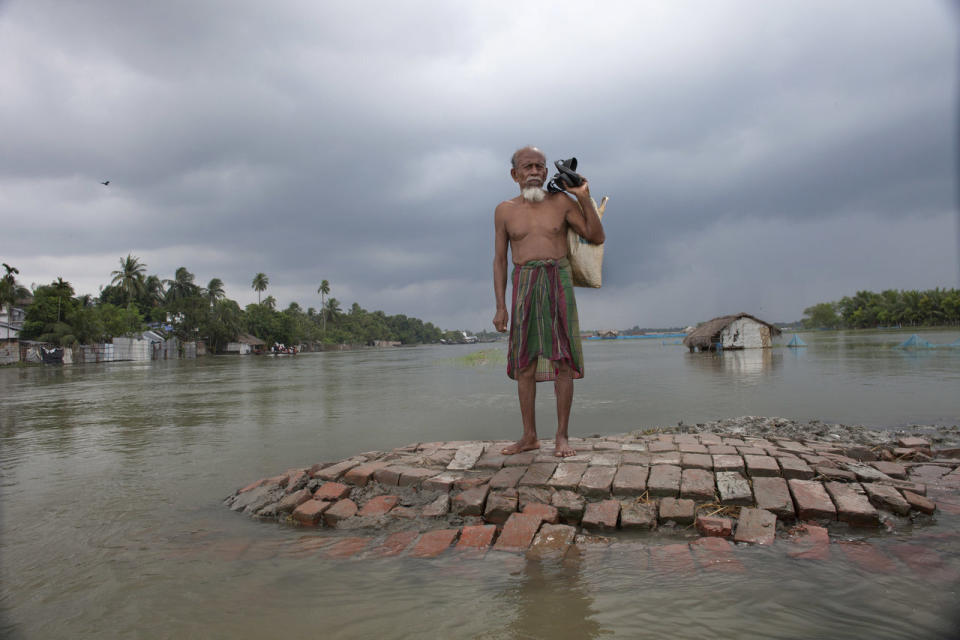
また、EUのグローバル気候変動同盟(GCCA)は「すでに沿岸部や乾燥・半乾燥地域では、洪水、熱帯低気圧、高潮、干ばつが頻発している」と報告している。
バングラデシュのシェイク・ハシナ首相は9月にハフポストUS版に寄稿し「バングラデシュは、気候変動の脅威に最もさらされている国です。気候変動と、気候変動が与えるその影響と闘うためには、明確なゴールが重要です」と述べている。また、2015年の降水量が例年より50%増え、農作物が深刻を受けたことに触れ「パリの気候変動会議では、測定可能で検証できる排出量削減目標を定めなければなりません」と強調した。
上の写真は2011年にバングラデシュ南西のサトキラ地区で起こった洪水の様子だ。男性がレスキューボートを待っている。
チャド
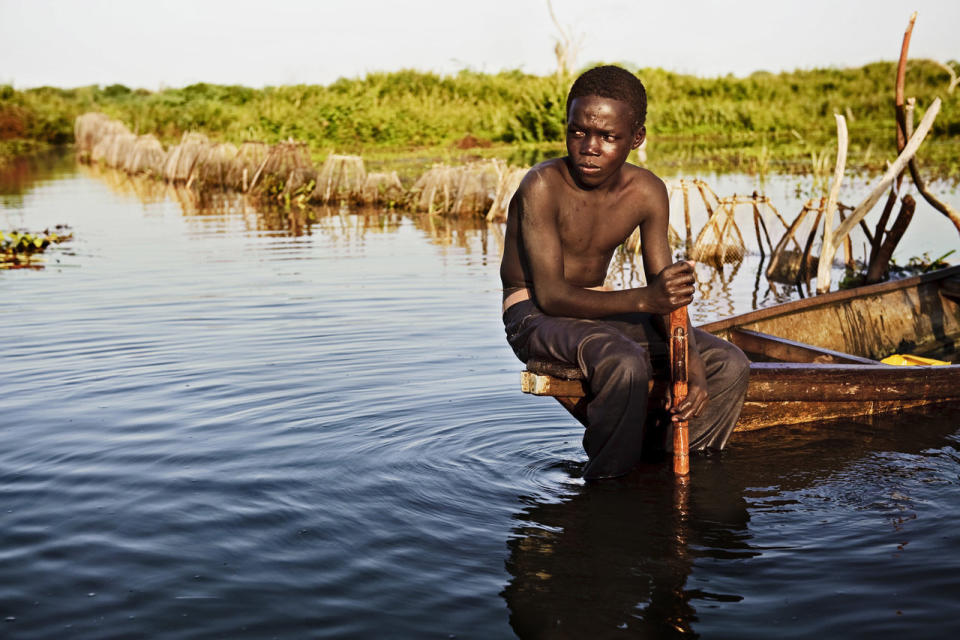
チャドはアフリカで最も貧しい国のひとつで、大規模な自然災害に対処するための十分な設備がない。GCCAの報告書は「自然災害によって深刻な干ばつや破壊的な洪水が増加する可能性があり、農業、畜産、漁業、健康や住宅へ大きな打撃を与えるだろう」と伝えている。
気候変動による被害が最も顕著なのはチャド湖だ。国連によれば、湖の大きさは1963年と比較して20分の1に縮んでいる。
上の写真は、かつては世界で最も大きな湖のひとつだったチャド湖だ。ニジェール、ナイジェリア、カメルーンといったチャド湖に面するその他の国々も、気候変動と湖の面積が縮んだことによる影響を受けている。
パリの気候変動サミットで、ナイジェリアのムハンマド・ブハリ大統領は「チャド湖に面している国々は、お互いが直面している課題についてさらに詳しく話し合い、この問題を一日も早く解決しなければなりません」と語った。
太平洋の島々

10万5000人が住み、33の島国からなるキリバスは平均標高が2mもない。Webマガジン「Slate」によれば、パリの気候変動会議でアノテ・トン大統領は「島に人が住めない状態になった時は島民を保護するとフィジーが申し出てくれている」と語っている。
上の写真は9月に撮影された。キリバスの村民ベイア・ティームは、以前は3~4年に一度起こっていた異常な高潮が今は3カ月おきに発生し、ほとんどの井戸が海の下に沈んでしまった、と話す。
キリバスに助けの手を差し伸べたフィジーも、自然災害に直面している。10月に行われた太平洋諸国の会議でラトゥ・イノケ・クンブアンボラ外相は、気候に影響を受けやすい腸チフスやデング熱、レプトスピラ症、下痢性疾患がフィジーで再び増えていると述べたとガーディアン紙が伝えている。
ニジェール
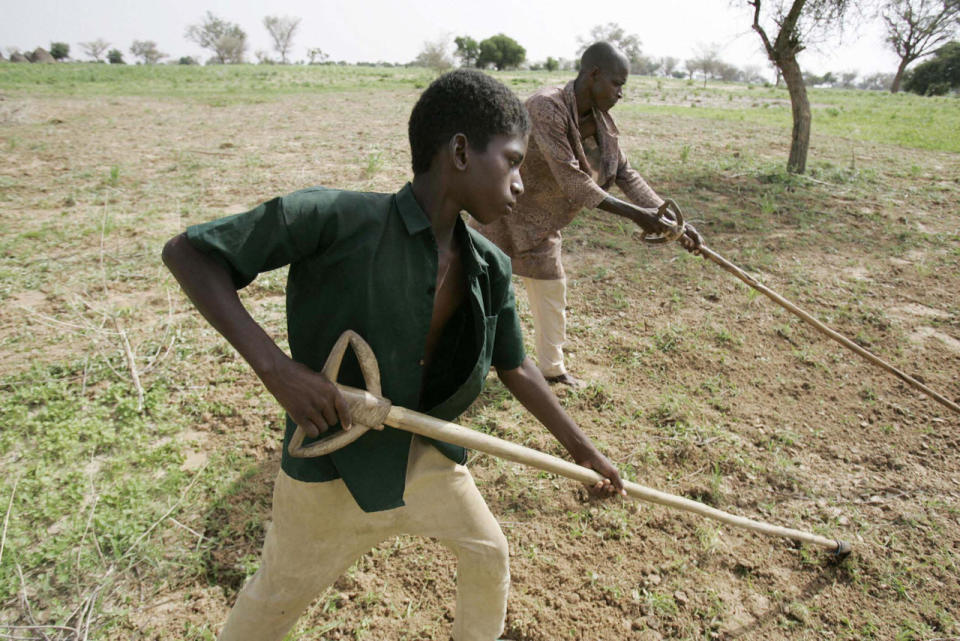
2013年には世界銀行のエコノミスト、エル・ハッジ・アダマ・トゥーレ氏が次のように述べている。「気候リスクにさらされ、さらに内陸国であるニジェールは、世界で最も温暖化の影響を受けやすい国のひとつです」「状況を複雑にしているのは、国内と地域それぞれで抱える過激派です。これらの要因が農業に影響を与えることで、食料や栄養の問題に発展します」
ニジェールは世界で最も出生率の高い国だ。女性1人あたりが産む子供は7.6人で、2031年までに人口が2倍に増加すると予想されている。気候変動で農業が打撃を受ければ、多くの国民が食料不足に苦しむ可能性がある。
上の写真は農作業をするニジェール人の少年と父親だ。2005年に撮影された。
ハイチ
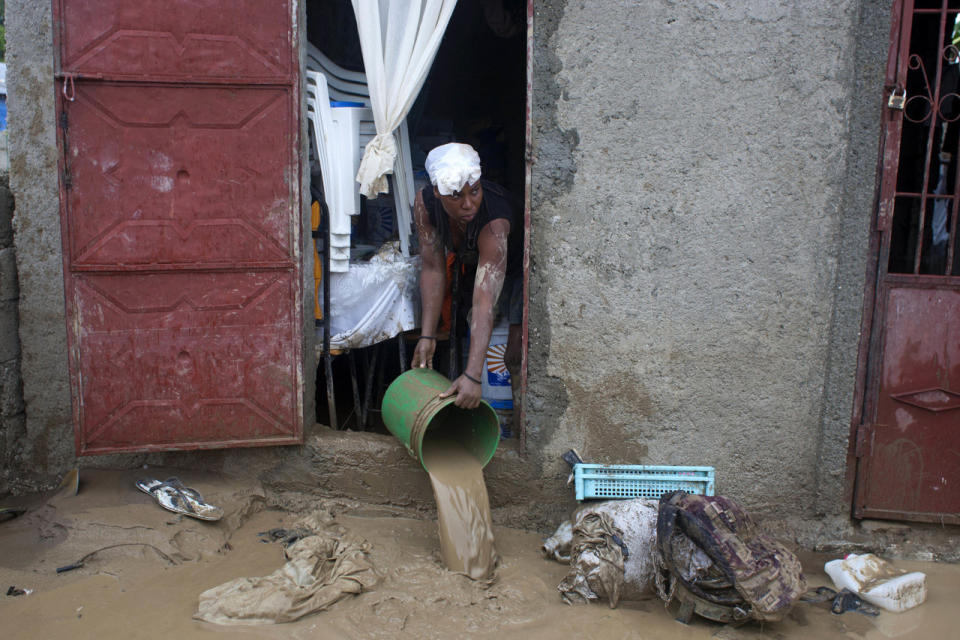
コンゴ民主共和国
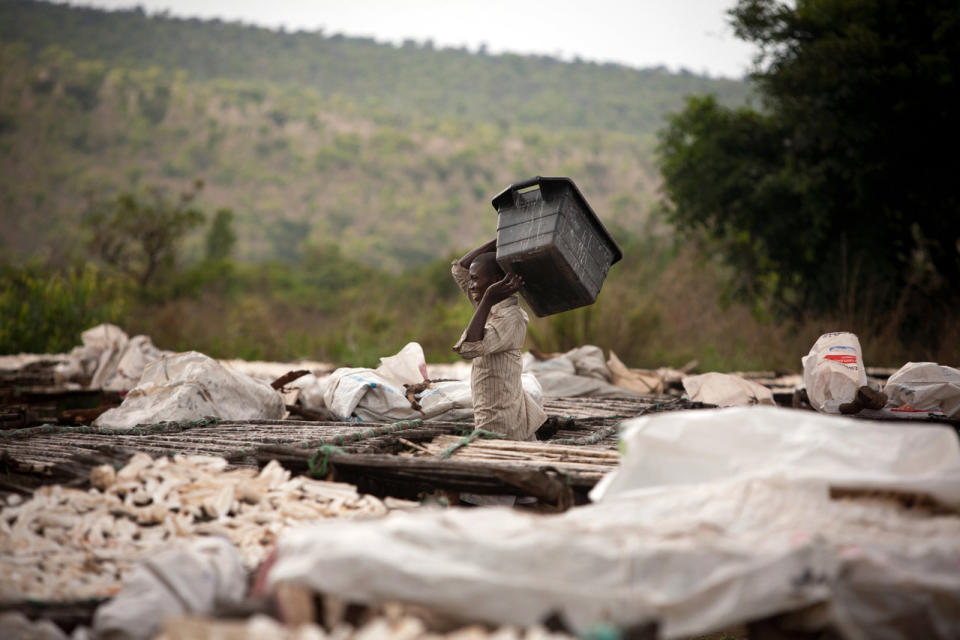
コンゴでは90%近くの人が農業で生計を立てているが、気候変動により中央部に位置するコンゴ盆地では豪雨、洪水、地すべり、土壌の浸食が発生し、農作物が大きな打撃を受ける可能性があるとBBCが伝えている。逆に南部のカタンガでは、2020年までに雨季が少なくとも2カ月短くなるだろうと予想されている。
また、温暖化によってマラリアや心臓血管病、水を介する感染症が増えるとも予測されている。
上の写真は、CO2を吸収するアカシアの木々の間でキャッサバを育てるコンゴ人男性。国連の地球温暖化防止条約で「CO2排出量の多い国」と登録されたことを受け、温暖化防止に取組んでいる。
アフガニスタン
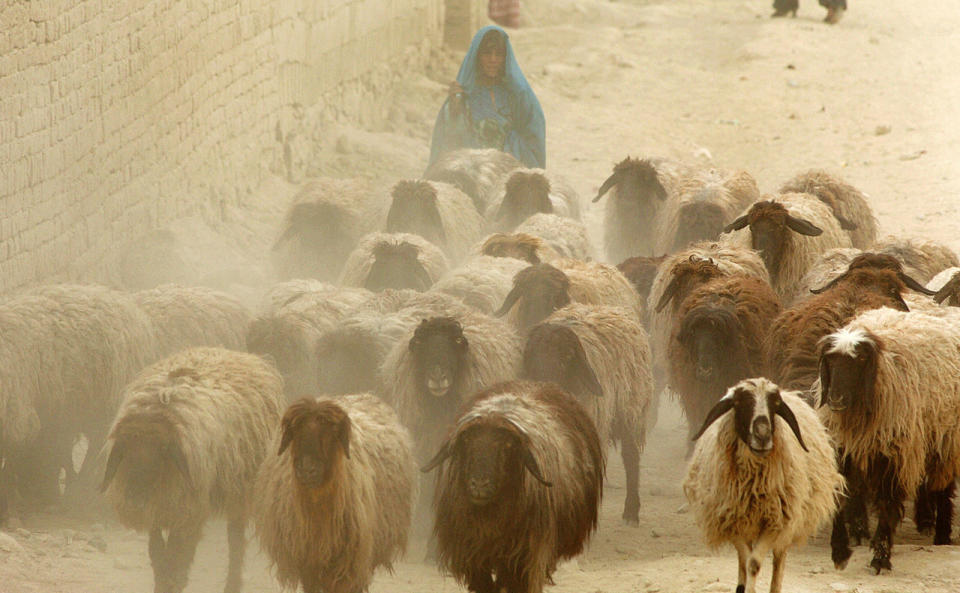
中央アフリカ共和国
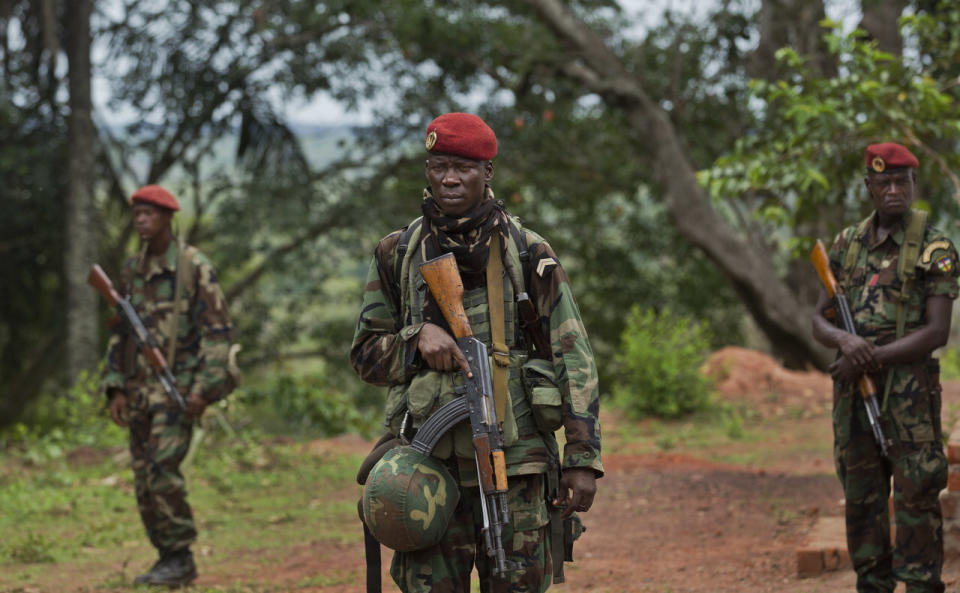
森林の研究機関「国際林業研究センター」の科学者のデニス・ソンワ氏は「状況に適応する能力をつければ、国を発展させることができます。誰もが参加できるような仕組みを作ることによって、紛争を減らし国内の緊張を和らげるでしょう」と語った。
ソンワ氏によれば、中央アフリカ共和国では、いまだにかんがいシステムが整備されておらず、雨季に降る雨に頼る昔ながらの農法が使われている。
一方で、首都バンギでは何度も洪水が起き、年間平均700万ドルの損害が出ているとガーディアン紙は伝える。
上の写真は、アメリカ陸軍特殊部隊との会議が行われている建物を警備する中央アフリカ共和国軍の軍人だ。
ギニアビサウ
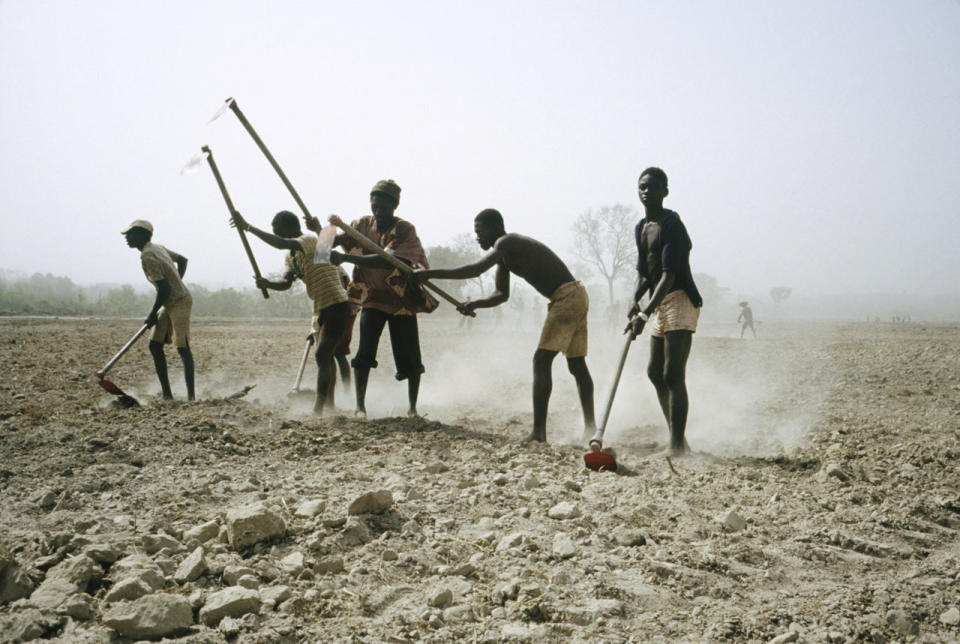
ギニアビサウもかんがいではなく、雨に頼って農業をしており、これがすでに問題となっている。
報告書には「気温の上昇にともない、あちこちで雨の降り方が不規則になっている。そして地表から蒸発する水蒸気の量が急激に増えたことで、農作物の生産が落ち、土壌が浸食されるようになった」と書かれている。
上の写真は、ギニアビサウの都市コントゥボエル近郊で水田を耕す農夫たちだ。
This article originally appeared on HuffPost.

